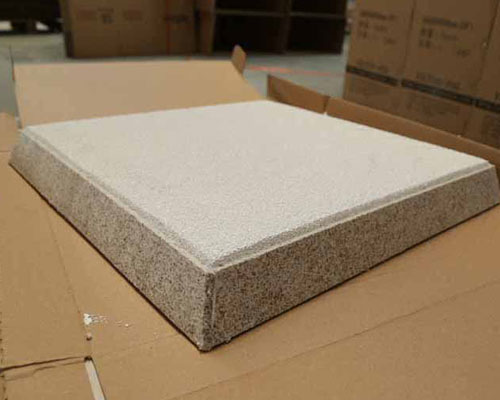Casting aluminum filters are mainly for filtering aluminum and aluminum alloys in foundries and cast houses. With excellent resistance to the corrosion of molten aluminum, they can effectively remove inclusions, reduce entrained gas and provide laminar flow, resulting in significantly cleaner filtered metal. Cleaner metal results in higher quality castings, fewer scrap and fewer inclusion defects, which translates into higher bottom line.
Casting aluminum filters are available in all common sizes: 7 “, 9”, 12 “, 15”, 17 “, 20” and 23 “.
We offer the entire porosity range from PPI 10 to PPI 60 (PPI = pores per inch). Individual slicing filters are also available.
Casting aluminum filters are fitted with edge gaskets. The gasket ensures the correct and tight fit of the filter in the filter housing. Different types of spacers are available, ceramic fiber gasket, expanded cotton gasket, etc. Also, you can choose CFF-AL without the gasket.

When installing and using it, in general, you need to pay attention to the following aspects:
1. Correct selection of filter plates: The size of the filter plates and the number of holes must be selected taking into account the flow range for the specific type of casting, the maximum liquid level in the metal during filtration, the total filtration volume, and the purity of the original aluminum liquid.
2. Filtration before melting can not be ignored: for example, conventional slag furnace and cleaning of aluminum melting furnace and holding furnace; refining in the furnace. In particular, an in-line degassing device is still needed because it not only reduces the hydrogen content in the melt, but also removes some non-metallic inclusions.
3. The filter plate must be adapted to the square body of the refractory filter: both are adapted for sealing to prevent metal from entering the casting body from the gap without filtration, and also to avoid floating in aluminum water due to the excessively lightweight of the foam filter plate … And failed.
4. Preheat Before Use: Preheat to remove moisture and facilitate initial transient filtration. Preheating can be done with electric or gas heating. Under normal conditions, this takes about 15 minutes.
5. During normal filtration, no slag is required to avoid the shock and vibration of the filter plate. At the same time, the gutter should be filled with aluminum water to avoid breaking the aluminum water too much.
6. After casting, drain metal from the flow cell and filter plate. Overseas, there is a vibrator that is placed on the filter plate and shaken for one minute to shake off about 75% of the remaining liquid metal from the filter plate.
7. Finally, clean the perimeter and remove the filter plate after curing.

